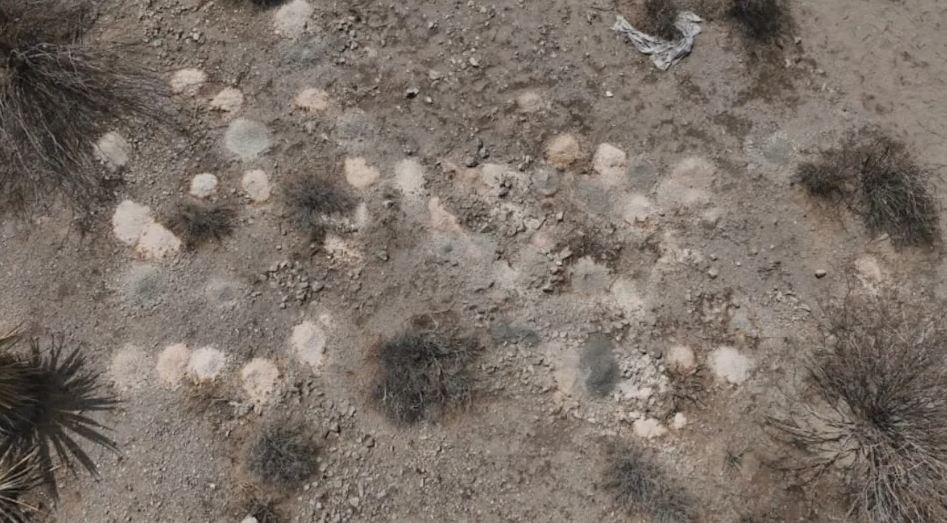In a remote area south of Las Vegas, near the small community of Searchlight, authorities uncovered an unsettling scene: hundreds of small piles of human remains, identified as cremated bone fragments, scattered across public desert land.
While the exact number remains uncertain, some reports say more than 300 separate piles of “cremains” were recovered.
What the Evidence Shows
According to official assessments, the remains were pulverised bone fragments typical of cremation. Among the materials at the site were broken urn fragments and cable-ties consistent with those used by funeral homes to seal bags of ashes.
The scale and spread of the deposits suggest a mass-dumping scenario rather than individual, family-led scattering.

Legal Complications and Investigations
Under Nevada law, individuals are allowed to scatter ashes on public land. However, the Bureau of Land Management (BLM) regulates commercial disposal of human remains on federal lands, and this incident appears to raise concerns about commercial-level handling. Federal investigators, alongside the local Las Vegas Metropolitan Police Department, have opened inquiries into how the remains arrived on the land, who was responsible, and whether any regulations were violated.
The Human Dimension
For families of the deceased, the discovery raises profound questions. Because many piles lacked identifiable information, locating loved ones within the heaps may be nearly impossible.Funeral-service professionals at the scene emphasised the importance of treating remains with dignity and honour — and expressed concern that many of the individuals involved may now be lost to anonymity.
Why It Matters
This incident sheds light on systemic concerns about oversight in the funeral-industry supply chain. When cremains end up abandoned in the desert rather than interred or returned to families, issues of trust, regulation and human dignity come to the forefront. It also raises questions about how remote lands are used for disposal and whether vulnerable families ever gave informed consent for what occurred.
What We Still Don’t Know
Despite growing awareness, many critical questions remain unanswered. Authorities have not publicly identified any mortuary, funeral home or individual responsible for the dumping. The precise number of piles, as well as their origin and whether they correlate to missing persons or mis-handled remains, remain under investigation. The length of time the remains were in the location and whether additional sites exist are also unknown.
Path Forward
Investigators are continuing to piece together the puzzle: reviewing funeral-home records, tracing urns and cable-ties, and working to identify any survivors or families connected to the remains. Meanwhile, funeral-industry stakeholders and regulatory agencies may face scrutiny and calls for tighter oversight. For the public, the episode serves as a reminder that end-of-life services require transparency, respect and clear accountability.

Conclusion
The discovery of hundreds of cremated human remains in the Nevada desert is both shocking and deeply troubling. It underscores the critical need for transparency, regulation, and ethical practices within the funeral and cremation industry. While authorities continue to investigate the origins of the remains and identify those responsible, the incident highlights the human and emotional dimensions of such mismanagement, affecting families who may never know the fate of their loved ones. Beyond the legal and logistical implications, the case serves as a stark reminder that respect and dignity should be paramount in handling human remains. Strengthening oversight, ensuring accountability, and maintaining clear communication with families are essential steps to prevent similar tragedies in the future.

















